Graham Reid | | 6 min read
Harry Nilsson: The Moonbeam Song

The too-short life of the greatly under-appreciated singer/songwriter Harry Nilsson (1941-94) was full of bitter ironies: not the least was that this gifted songwriter's biggest hits were written by others.
His memorable Without You was penned by Pete Ham and Tom Evans from the Beatles-blessed power poppers, Badfinger; and although Nilsson's beautiful original song I Guess the Lord Must Be in New York City was slated as the theme to Midnight Cowboy, director John Schlesinger opted for him singing Fred Neil's Everybody's Talkin'.
Neil rightly got the credit for a great song, but it hardly helped the fragile ego of the singer who had been hailed as their favourite artist by no less authorities than John Lennon and Paul McCartney.
Nilsson's wayward genius was announced to the world in 1968 by Lennon and McCartney when they launched the Apple label in New York, and said he was their favourite artist.
 Nilsson was a jobbing LA songwriter, but on his album Pandemonium Shadow Show he'd ambitiously covered She's Leaving Home, and You Can't Do That was a precociously clever and multi-tracked amalgam of Beatles titles, hooks and riffs. Lennon and McCartney were both so impressed they called him.
Nilsson was a jobbing LA songwriter, but on his album Pandemonium Shadow Show he'd ambitiously covered She's Leaving Home, and You Can't Do That was a precociously clever and multi-tracked amalgam of Beatles titles, hooks and riffs. Lennon and McCartney were both so impressed they called him.
In later years Nilsson wasn't entirely helped by his Beatle connection: some people know Nilsson only as John Lennon's LA boozing buddy in the early 70s. Yep, that's Harry in the Famous Photo with his fist clenched and maybe trying to stop the peaceful Beatle from punching someone out.
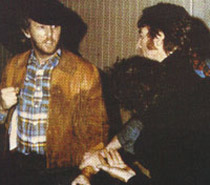 "That ruined my reputation for 10 years," Nilsson said later. "It still haunts me. People think I'm an asshole and a mean guy. They still think I'm a rowdy drunk from the 70s who happened to get drunk with John Lennon, that's all."
"That ruined my reputation for 10 years," Nilsson said later. "It still haunts me. People think I'm an asshole and a mean guy. They still think I'm a rowdy drunk from the 70s who happened to get drunk with John Lennon, that's all."
Part of Nilsson's problematic public profile also stems from the fact he was prolific, but bounced across many styles.
He was an adult-pop craftsman who wrote children's songs (his album/story The Point was a metaphorical children's tale for adults and an animated television film), flat tack rock (Jump Into the Fire), naive pop (Cuddly Toy was a hit for the Monkees) and faux Caribbean songs ("put de lime in de coconut").
He fooled around with sound effects and tapes, used orchestras, had Van Dyke Parks on piano, and steel drums when required.
He recorded an album of Randy Newman songs years before most people knew who Newman was -- it rose without a trace -- and his ballads were sometimes undercut by his Anglophile humour: "Ever sat on a fence with bits of crap around its bottom blown there by the wind?" he sings seductively on The Moonbeam Song.
He got the Stepney and Pinney pensioners choir to sing a chorus, "I'd rather be dead than wet my bed."
Throughout his short career -- effectively little more than a decade from '67, and he rarely played a concert -- Nilsson had an intuitive understanding of English music hall, Tin Pan Alley and rock'n'roll.
He didn't shy away from writing country'n'western parodies (Joy) or attacking sacred texts such as River Deep Mountain High.
Nilsson's many humours ran from wry observation to satirical stuff'n'nonsense. And he also wrote film scores. He was an exceptional piano player (for Nilsson sings Newman he analysed Randy's playing intensely), and could sing with great sensitivity . . . or like his life depended on it.
Nilsson was more an adventurer than an artist: part Warren Zevon and part Boyce-Hart; an accomplished journeyman but serious artist; and a balladeer with a three-and-a-half octave range. 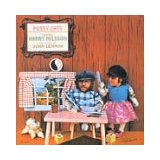
You can hear why Lennon liked his echo-heavy rock voice, and they recorded the album Pussycats together, a not entirely successful venure but it at least had the effect of straightening Lennon up while he played producer.
Of course, Nilsson also got boozed and coked to the eyeballs, and his public career was over by 1980.
He withdrew after Lennon's murder, and died in '94 of a heart attack, aged 52. A few years previous his manager had stolen just about every dollar Harry made. When he died Harry was all but broke.
Because his greatness was scattered over so many albums it is impossible to identify a genuine all-killer classic among his catalogue, but Nilsson Schmilsson comes closer than any. It has bouncy pop-rock (Gotta Get Up, the mock-Caribbean Coconut), old style rock'n'roll (Let the Good Times Roll) and the beautiful but self-deprecating Moonbeam Song. And there are the two ends to his wide spectrum: the big ballad Without You and the desperate Jump Into The Fire. The album closes with the haunting I'll Never Leave You.
Written over many months and drawing on some older material, Nilsson Schmilsson perhaps lacks the coherence we expect from albums today -- but this is part of its appeal: it is an honest reflection of a songwriter whose considerable gifts couldn't be constrained by any specific style.
The journey into Harry Nilsson -- pop and rock albums, The Point for the kids, soundtrack work and that flawed album Pussycats with Lennon -- begins with Nilsson Schmilsson. After that you could use him as an intro to Randy Newman's considerable catalogue if that is new to you. (A tip, stick with Randy's first decade or so until you get the beat of his pulse.)
Harry Nilsson has all but disappeared from popular culture but listening to his best work makes you realise what we are missing. Towards the end of Scorsese's Goodfellas there's an adrenalin-pumping sequence when Ray Liotta is snorting coke, picking up his brother from hospital, racing home to prepare spaghetti sauce, snorting again, selling guns, snorting, and watching for police choppers. The madness kicks in with Harry's breakneck Jump into the Fire. In the context it is perfect.
Unfortunately, some days must have been like that for Harry, too.
He jumped into fires.
*****
Some years ago Nilsson's first eight albums were nicely remastered and generously put two albums on one disc for some of them. It was one of the most thorough and deserving reissues of recent years. The discs come with useful liner notes, and judiciously few extra tracks and outtakes.
The two-fer discs are Pandemonium Shadow Show/Aerial Ballet; Harry/Nilsson Sings Newman; and Skidoo/The Point. Nilsson Schmilsson and Son of Schmilsson are on single discs with extra tracks.
Of these, the two Schmilssons are essential.
Harry/Nilsson Sings Newman is the next step.
The early Shadow/Ballet pairing is perhaps interesting only if you get real serious.
His soundtrack songs to Otto Preminger's Skidoo is fine but hardly necessary. (He sings the films credits: "And Groucho Marx played God.") 
But Skidoo is paired with The Point which is Harry's knowing gem of a childrens' story which was the charming animated movie voiced by Dustin Hoffman.
Excellent, especially if you are a kid -- or have ever been one.
These Essential Elsewhere pages deliberately point to albums which you might not have thought of, or have even heard . . .
But they might just open a door into a new kind of music, or an artist you didn't know of.
Or someone you may have thought was just plain boring.
But here is the way into a new/interesting/different music . . .
Jump in.
The deep end won't be out of your depth . . .

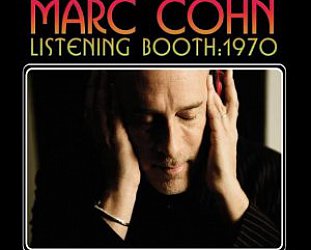
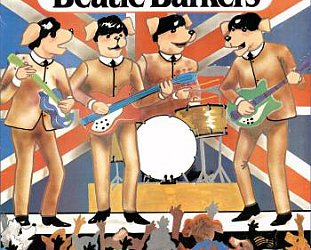
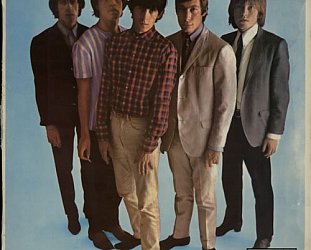
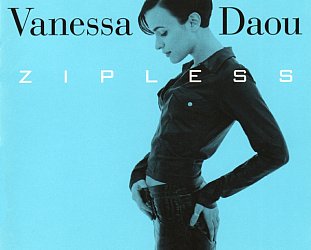
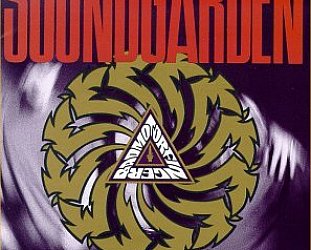

Earl B. - Feb 28, 2011
Oops, the video link has disappeared, Graham.
SaveI recently read "Touch Me, I'm Sick: The 52 Creepiest Love Songs You've Ever Heard" an amusing and well-written little book (it's here http://www.amazon.com/Touch-Me-Im-Sick-Creepiest/dp/1556527535) which the author freely admits is an idiosyncratic collection. To me, one notable omission from it is Harry's version of "Save The Last Dance For Me" off Pussycats, which from the way he sings it could be called "Save The Last Dance For Me Or I'll Kill You" It's great!
Jeremy - Mar 1, 2011
Gone but not forgotten from popular culture - LCD Soundsystem recorded a riotous version of Jump Into The Fire as the b-side for their single Daft Punk Is Playing At My House. Best when dialled up to to 11.
Savepost a comment